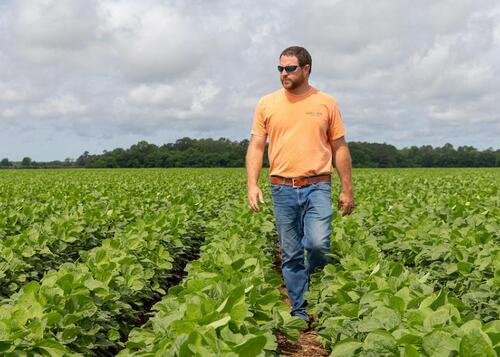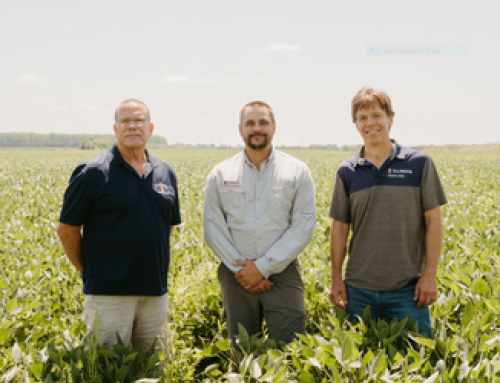Photo by Farm Journal“You hope and you can tell a field is going to be special,” Harrell says. “But 218? I’m overwhelmed.”
by Chris Bennett, Farm Journal
At a freakish 218.2856 bushels per acre, Alex Harrell fired the soybean shot heard round the farm world. Mind-blowing yield. On Aug. 13, Harrell eclipsed his own world record of 206.7997 bushels, set in 2023. Back to back, he has grown the highest yielding soybeans in agriculture history.
The southwest Georgia farmer cut a bin-busting 218 bushels in the Georgia Soybean Production Contest. “At harvest, I thought I was in the ballpark of last year’s 206, but I never thought it’d be so high,” Harrell explains. “It’s an incredible result, but it’s a whole different story from last year.”
Changing the Formula
On 4,000 acres in Lee County, Harrell, 34, grows corn, soybeans, watermelons, and wheat. In 2024, a year after recording outrageous yields and breaking the 200-bushel barrier, Harrell aimed for the bull’s-eye again, but determined to change gears across the entire setup.
On March 21, he punched a Pioneer P49Z02E variety (4.9 maturity group) at a 110,000-planting population into red clay watered by center pivot irrigation on the opposite end of the county from his previous year’s success.
Harrell was searching for a repeat performance in a separate environment, other than maintaining 30″ rows. “Starting off, we used less preplant chicken litter,” he describes. “I used a different genetic trait and different herbicide trait–pretty much different everything, but still shot for the same result.”
Photo by Alex Harrell“The beans got what they needed on the day needed,” Harrell says. “No delays.”
Or far better.
Harrell ran double strip till at planting. First, a deep pass. Second, a shallow pass with banded fertility in front of the planter. “We still ran in-furrow, and 3-x-3 fertility on the planter; we sprayed pre-emerge herbicide out the back. Basically, we had four things going out at planting: seed, an in-furrow mix, a 3-x-3 mix, and a herbicide mix broadcast out the back.””
“We utilized Enlist. We used weekly tissue sampling, then Y-dropped and foliar fed accordingly. Again, almost everything changed from 2023 (Asgrow 48X9).”
Grain Fill Glory
At planting, Harrell chose five fields to push high-yield soybeans. Ten days after planting, Harrell scratched four of the fields from high-yield production due to emergence timing. “My loamy, lighter dirt, usually the easiest to get a stand with, had just got too much rain and it sealed over and couldn’t breathe. But the red clay, usually the hardest to get a good stand on, got the right rain, and didn’t seal up. The red clay field had the best emergence and spacing as I’ve ever seen.”
“The beans got what they needed on the day needed,” Harrell says. “No delays.”
At emergence, Harrell detected potential for major yield numbers. Absolutely no skips or doubles. Final stand of 105,000. “Literally, it was the best singulation I’ve ever seen.”
At August harvest, with his father, Rodney, watching as the yield tally climbed, Harrell hit 218.2856 bushels per acre on 2.58 acres, with the remainder of the field well north of 100 bpa. The record soybeans averaged almost 3.1 beans per pod. His 2023 average was 2.8 beans per pod. “First time ever–we had more 4’s than 2’s.”
To read the entire report click here.




